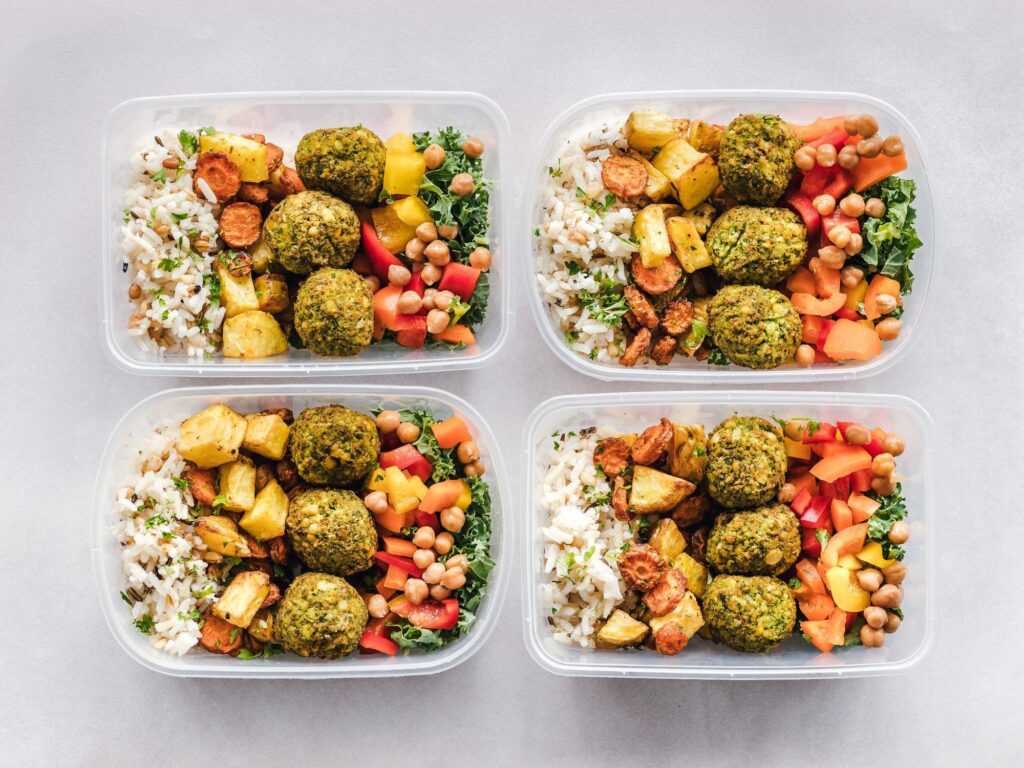
Crossfit is one of the most intensive, demanding, and competitive workouts out there. With a mixture of Olympic lifting, cardio, functional movement and more, the right diet is critical for performing your best and achieving peak levels of fitness.
So what is the best diet for Crossfit? Let’s take a look at the pros and cons of some of the most popular diets for Crossfitters and see how they compare.
Paleo
Known as the original Crossfit diet, paleo focuses on nutrition from an evolutionary perspective. It includes foods that our ancestors have eaten for thousands of years while excluding foods that our bodies have not yet evolved to tolerate.
Acceptable foods include fruits, vegetables, meat, nuts, and seeds. Foods that are avoided include grains, legumes, dairy, sugar, soy, and vegetable oils.
Paleo is macronutrient agnostic, which means there’s no set macro split. There’s also an emphasis on food quality, with priority placed on sourcing organic, grass-fed, and free-range where possible.
Pros
- Promotes overall health
- Increases energy levels
- Decreases inflammation
- Can help or resolve many health problems, especially autoimmune conditions
Cons
- Can be difficult to dine out
- Always checking food labels
- Excludes foods you may be able to tolerate, such as dairy

The Zone
The Zone diet has surpassed paleo not just in popularity among Crossfitters, but has become Crossfit HQ’s officially endorsed diet.
This diet uses more of a traditional fitness approach to nutrition, with a set macro split (40% carbohydrate, 30% protein, and 30% fat). Macros and calories are tracked in “blocks”, with a certain amount of these blocks making up your daily calories.
The Zone allows for more grains than paleo, but places an emphasis on low glycemic index carbohydrates for sustained energy release.
Pros
- Encourages eating a whole foods diet
- Can reduce inflammation
- More control over diet through calorie and macro tracking
- More sustained energy thanks to low GI carbs
Cons
- Lots of tracking and rules can be time-consuming
- Might be too restrictive for some people
- Can be difficult to eat out due to lack of control over portion sizes

Keto
We’ve done a pretty good job discussing the keto diet in another recent blog post, which you can check out here. Basically, keto is a high fat, moderate protein, and very low carb (20 grams or less per day) diet. This level of carbohydrate restriction puts your body into a state of ketosis, so your primary energy source switches to fat instead of glycogen (carbohydrates).
The keto diet excludes not just most carbohydrate-rich foods, but “bad” fats such as vegetable oils. It’s also been gaining popularity in the Crossfit world. One six-week study on Crossfitters and keto found decreased levels of body fat and maintained or improved lean body mass and performance.
Pros
- Can reduce inflammation
- More sustained energy
- Fewer sugar cravings thanks to regulated blood sugar
- Great for adapting to fasted workouts
- Easier to avoid high-carb foods and in turn, maintain or lose weight
Cons
- Can feel restrictive
- More challenging to find keto options when dining out
- Some people report a decrease in performance, especially with lifting
- Requires a lot of attention to electrolytes
The best Crossfit diet for you
You don’t actually have to eat Paleo, The Zone, or any specific diet at all if you do Crossfit. What matters is that you’re eating enough food to fuel your workouts, keeping your protein high to encourage muscle growth, and eating things that make you feel good mentally and physically.
Top Crossfit athlete Sara Sigmundsdottir actually shared in an interview that she’s seen her fellow athletes eat burgers and fries as their pre-workout meal. Hey, maybe they’re following an If It Fits Your Macros (IIFYM) approach.
Do you suspect your diet may be hindering your Crossfit workouts? Try a different style of eating for a while (at least a month) and see how your body responds.
And of course, don’t forget to check out our range of functional fitness equipment ideal for Crossfit— no matter what diet you follow.